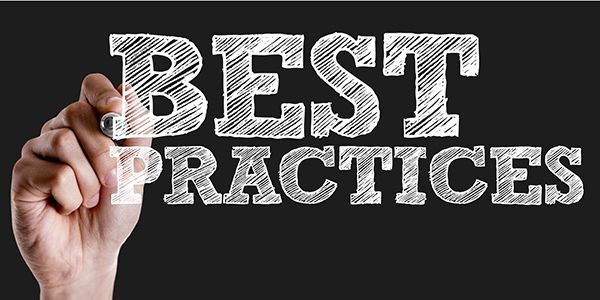From the Sponsor’s Desk – Conquering Culture Clash
“We are far more united and have far more in common with each other than things that divide us”
Jo Cox
British Labour MP
22 June 1974 – 16 June 2016
Culture clashes are occurring the world over. In Britain, Europe, North America, the Middle East, Asia and Africa, confrontations between cultures are often the new normal. So too in the business world. Organizations in search of the best and brightest bring people together from all over the globe to work together. Sometimes the result is not what was hoped for. Often the culprit is culture clash – the inability of people from different cultures and backgrounds to work together effectively. So how do we conquer culture clash?
In this story, we’ll look at one person’s journey from project and change management consultant to trainer and ambassador for cultural collaboration. What started out as a request from one business leader to help solve a cultural conflict on one technology team ended up with over fifty training sessions for over one thousand people in North and South America. The accolades from all quarters suggest the program was a success. Attendees acquired new frames of reference to help conquer culture clashes in their worlds going forward.
The Situation
Rekha Kulshreshtha was an experienced project and change management consultant. She was working on a change management assignment when her client approached her with a request to address a potential cultural conflict on one of the teams on a major business change he was sponsoring.
The client had encountered a problem on a previous project that cost him the services of a talented East Indian technician. He was recruited because of his unique skill set after a long search. He was flown to the North American firm’s headquarters, provided with a motel room close to the office, introduced to his leader and teammates and given a standard company orientation. Two days later, the technician informed the company he wished to return home. It seems two problems were at the core of his request: he was a vegetarian in a meat loving city and couldn’t determine what was suitable for him to eat and, he didn’t know how to use the phone to call home. His culture made asking for help inappropriate. He didn’t want to offend.
The client wanted to pre-empt a repeat occurrence on this project. The project was much bigger. The number of offshore staff was much larger. The risks were far greater. So he asked Rekha to take on the challenge. Rekha was born in India and moved to North America when she was six. Often she was the only non-white student in her school. She knew how North Americans tended to react to people who looked and spoke differently. She could also empathize with those who were from away. So Rekha said yes to the challenge.
The Goal
With her client’s collaboration, Rekha established the following goal: to ensure that team members have the environment, knowledge and tools to prevent and/or overcome barriers to effective communication. Emphasis was to be placed on but not limited to cultural perspectives.
The Project
Rekha was an experienced change management consultant. She looked at her change management plan but found the new assignment didn’t fit. She came to the conclusion that providing a framework to achieve her goal was a separate and distinct deliverable. She believed a short targeted course was the answer. She proposed her solution to her client. He agreed.
Rekha wasn’t an educator. However, she had prepared and run innumerable workshops and project reviews in her career so she decided to tackle the course development herself. After all, she had personally experienced the cultural divide. So, she researched. She developed and borrowed material. She trialed and revised accordingly. Finally she had a course she thought was ready for prime time.
The Course was based on a number of principles:
- It had to be interactive
- It had to have a Goldilocks duration – no more than three hours
- It had to be accessible locally and remotely
- It had to be suitable for any culture or mix of cultures
- It had to feature stories – Rekha’s as well as the attendees
- It had to leave participants feeling confident about their abilities to adapt to most communication challenges, one on one and in group settings
[widget id=”custom_html-68″]
The core of the course was the Cultural Dimensions chart below:

The dimensions and spectrums Rekha chose were sufficiently broad to generate discussion, tales of personal experiences and provide insights into the approaches one could use to avoid or remedy a communication problem. And so Rekha proceeded to deliver the first course.
The Results
The first course was delivered to eighty team members. There was no offshore staff involved. Rekha used examples from her own experience to get the discussions going. And then the flood gates opened. One after another, the attendees would recount an experience, a culture clash. They were often about misunderstandings with someone from the same community, with the same cultural background.
Rekha explained to me, “Although the intention of our course was to help people from different countries communicate with each other more effectively, what we really focused on was the basic elements of ‘teaming’. And actually we used stories like the difference between a visit with a hair-dresser (long term relationship) versus a used car dealer (short term transaction) to emphasize that even within our country and culture, there are behaviours across the spectrum and we experience and accept these differences. Once we get people to see the spectrum of behaviours within our own culture, it’s easier to understand that these behaviours exist in other cultures as well.” As Rekha observed, “culture is about generalizations. Never assume everyone is going to be the same”.
After more than fifty courses on two continents involving over one thousand participants, both locally and remotely, the course has received over 80% positive response. Participants are usually bubbling with insight and enthusiasm at the end. Clients have been universally positive. Their feedback suggests that all teams that have been through the course seem to perform at a higher level, offshore members or not. I’d say Rekha and her clients have indeed managed to conquer culture clash.
How a Great Leader Succeeded
I met Rekha virtually, through Linkedin. I asked if she had any stories to share. And here we are. Her success is due to a number of factors including the following:
- Outside the Box Thinking – Rekha’s success was due, in part, to her realization that the client’s request was a separate and unique challenge. You know the old saying, “if all you have is a hammer, everything looks like a nail”. Rekha didn’t fall into that trap. She recognized that the problem identified by her client needed a different approach even though it was outside her comfort zone.
- Credentials – Rekha was an experienced project and change management consultant. She was also Indian born and Canadian raised. She brought that insight and experience to the development of the course and the delivery of the material.
- Supportive Clients – like all changes of this magnitude, Rekha wouldn’t have been successful without the leadership and passion of her client, the corporation’s CIO. He was open, honest and collaborative and he owned the program. When one of the project managers suggested the first offering of the course should be cancelled because the risks were too high, the CIO just said keep going.
- Collaboration – Rekha consulted widely, with managers, project teams, change management and organizational development experts, educators and culture change pros. She begged, borrowed and adapted as the needs dictated.
- Iterative development – Rekha recorded lessons learned from each course offering using the formal assessments submitted as well as her own recollections and reactions. The course evolved over time and Rekha’s ability to adapt the content and delivery progressed as well.
- Time – the two hours Rekha required for the course was ideal. It was short enough that it was tough to say no to. The content she was able to cover was sufficiently compelling and consumable to be retained by the attendees well after the course finished.
So, be a Great Leader. Put these points on your checklist of things to consider so you too can improve team communication and performance. If you’d like more information about the course, contact Rekha directly at [email protected] And if you’d like to understand your own cultural tendencies and how they compare with different country profiles, take a look at Country Navigator. And remember, use Project Pre-Check’s three building blocks covering the key stakeholder group (including the key stakeholder roles), the decision management process and Decision Framework best practices right up front so you don’t overlook these key success factors.
Finally, thanks to everyone who has willingly shared their experiences for presentation in this blog. Everyone benefits. First time contributors get a copy of one of my books. Readers get insights they can apply to their own unique circumstances. So, if you have a project experience, good, bad and everything in between, send me the details and we’ll chat. I’ll write it up and, when you’re happy with the results, Project Times will post it so others can learn from your insights. Thanks








